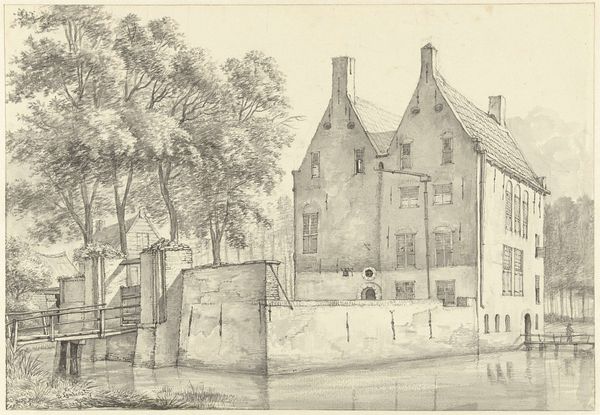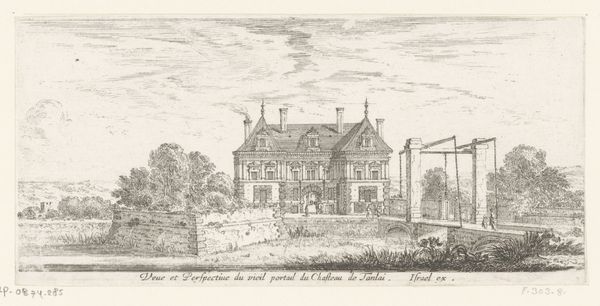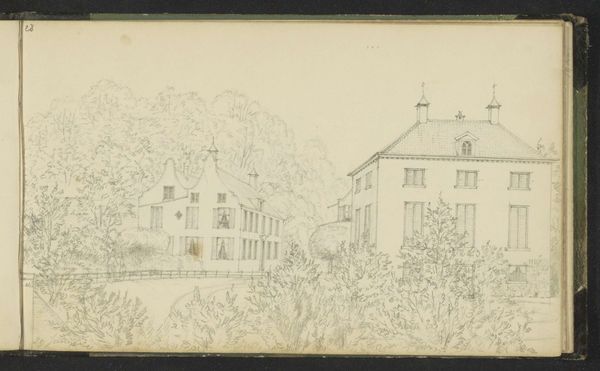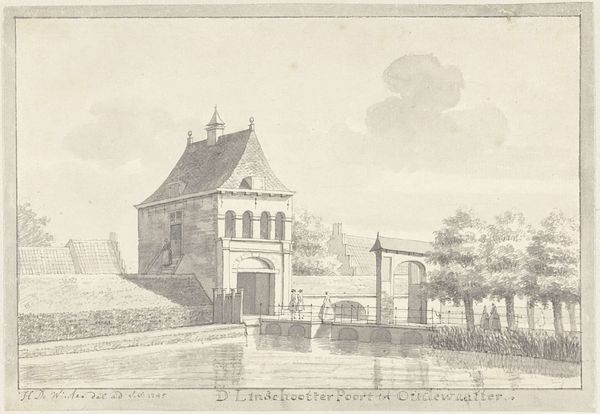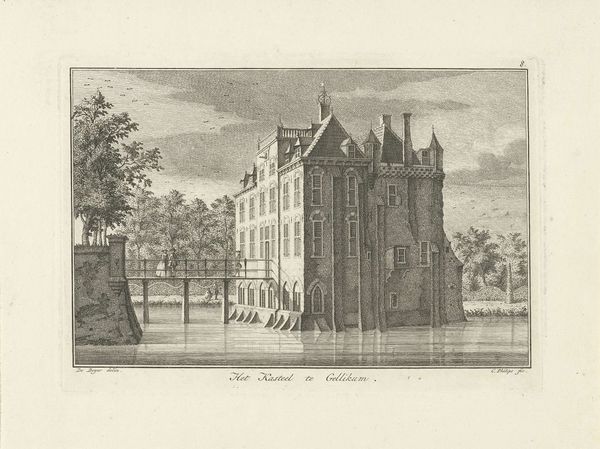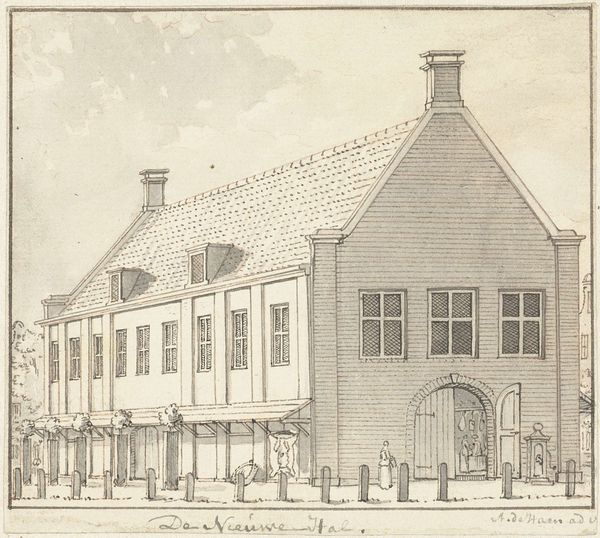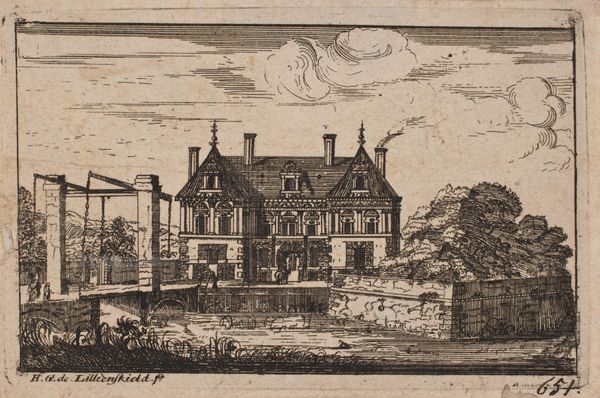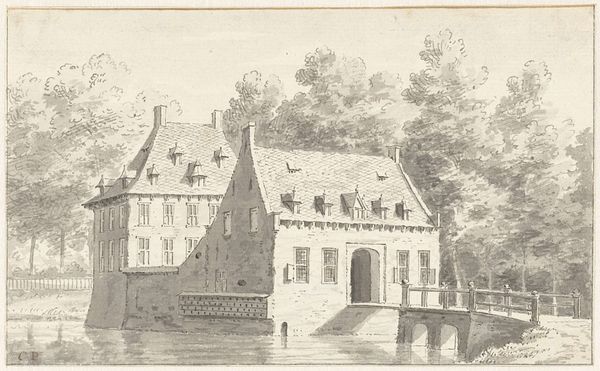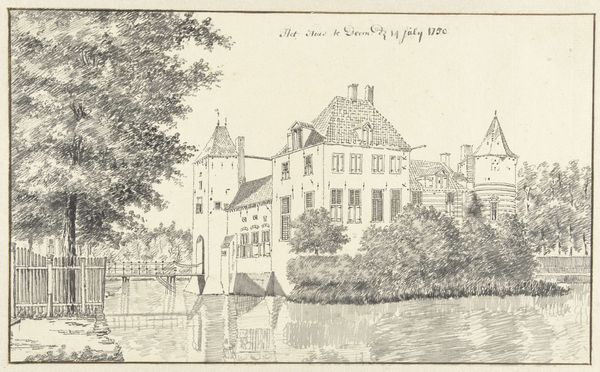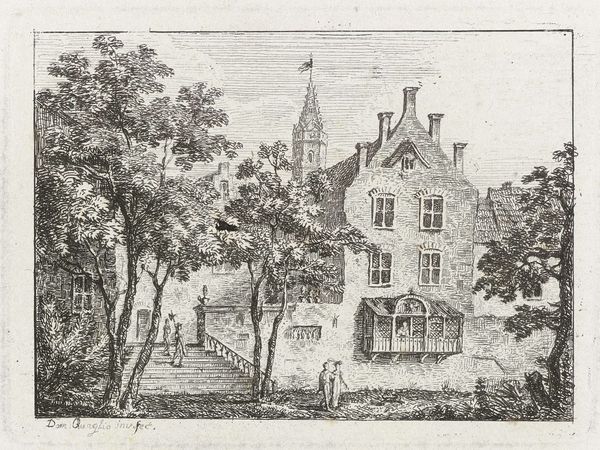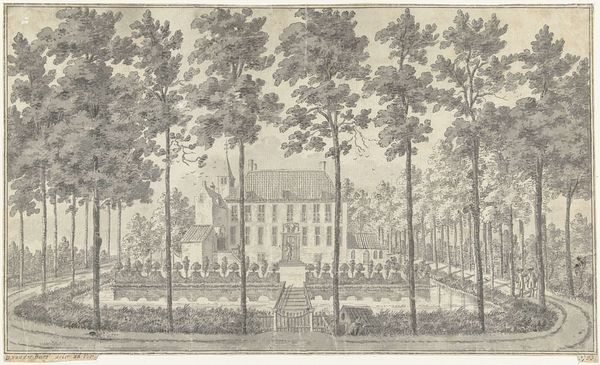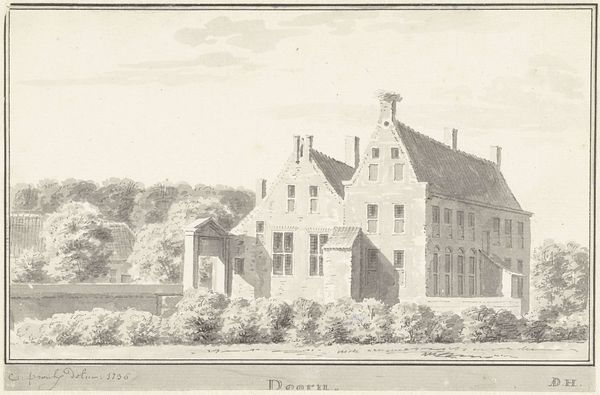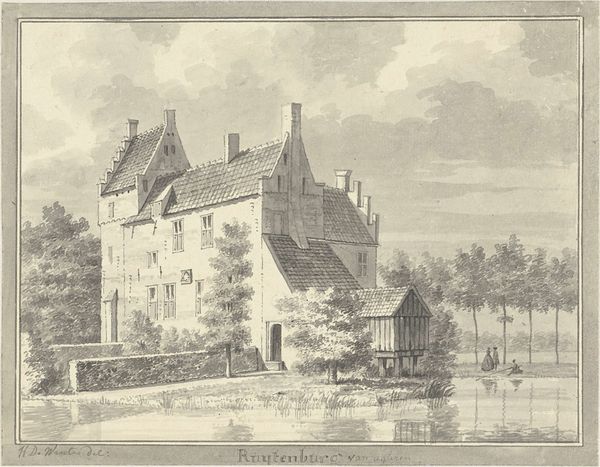
drawing, paper, ink, pen, architecture
#
architectural sketch
#
drawing
#
baroque
#
landscape
#
paper
#
ink
#
pen-ink sketch
#
architectural drawing
#
architecture drawing
#
pen
#
cityscape
#
architecture
Dimensions: height 139 mm, width 200 mm
Copyright: Rijks Museum: Open Domain
Curator: This is Abraham de Haen the Younger’s “Het Huis Gerestein, bij Woudenberg,” dating from 1730. It’s rendered in pen and ink on paper. Editor: My initial thought is how calm this scene is, despite the evident labor behind constructing such a building and then representing it so meticulously. Curator: It's interesting you mention labor, because de Haen was intensely interested in architectural structures, likely considering the workers who built and maintained these structures. As a landscape, it subtly acknowledges class divisions implicit in such estates. Consider, the paper itself, the ink he would have needed…these were commodities not available to all. Editor: Absolutely. And viewing this piece through a contemporary lens, the architectural precision serves not only an aesthetic purpose but also underscores the societal power structures it embodies. Curator: I agree, it reflects a time where estate architecture symbolized both social and economic ascendancy, built on exploitative labor systems. The drawing gives insight into the Baroque obsession with capturing perfect renditions that mirrored wealthy families. Editor: This artwork also speaks to how art participates in shaping perceptions around land ownership and its historical context, too. By emphasizing Gerestein house’s beauty without overtly depicting the work involved in its upkeep, the drawing subtly normalizes certain societal hierarchies of 18th century Dutch society. Curator: Exactly. De Haen doesn't seem to criticize the house. The labor seems "natural," so there are more political undercurrents at play, showing just how ingrained societal hierarchy had become in landscape art and depictions of life during that time. Editor: Well, I'm left thinking about the interplay between nature and architecture. This drawing, while seemingly simple, exposes layers of social context embedded within representations of place and property. Curator: For me, I consider it more valuable by acknowledging the resources required to create an artwork such as this piece; both the landscape and how de Haen represented the estate in pen and ink!
Comments
No comments
Be the first to comment and join the conversation on the ultimate creative platform.
